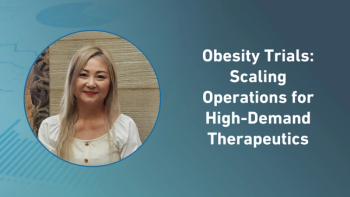
The Future of Oncology is Now: An Interview with Novella Clinical CEO Richard Staub
Last August, Quintiles announced its intention to purchase Novella Clinical, specifically for its focus on small and mid-sized oncology biopharma clients, as well as medical device and diagnostics companies.
Last August, Quintiles announced its intention to purchase Novella Clinical, specifically for its focus on small and mid-sized oncology biopharma clients, as well as medical device and diagnostics companies. We checked in with Novella President Richard Staub to discuss post-acquisition life, outsourcing, and emerging trends in oncology.
“The whole strategic foundation behind that acquisition was understanding that this group of customers, biotech with a focus on oncology as well as medical devices, needed a different type of solution and Quintiles was looking for deep therapeutic expertise, a high touch project management approach, and a company that was the right fit for them,” said Staub. An analyst said at the time of the acquisition, it made strategic sense.
Since then, Novella has operated as a standalone organization, keeping its name and adding the tagline A Quintiles Company. Said Staub, “If you talk to the average Novella Clinical employee they would tell you that little has changed, it’s still our management team, our SOPs, our infrastructure, for example, CTMS, EDC. From a customer perspective, they see us exactly as we were prior to the deal.” Functions that have changed are the typical post-acquisition suspects, financial reporting and HR.
For Novella, a major benefit is brand recognition. “We have benefited by the brand recognition that comes with being a Quintiles company and the brand cache they have in the marketplace. People understand that we have the critical mass behind us and the financial wherewithal and access to implement very large programs,” explained Staub. Another benefit is access to Quintiles’ broad-based laboratory services. “If we think about the oncology space and the use of biomarkers and companion diagnostics, one of the things that we’ve been able to bring to the table is that lab expertise, which we previously had to outsource. For example, we now can bring experts from Expression Analysis (EA) – another Quintiles company – to the table and have done so on multiple occasions.”
But has being attached to a “large” (or as in this case, the largest) CRO been a negative? That is, if the observation that small companies go with small CROs and vice versa is common. “We’ve very specifically tried to address that need in the market with the business model we have in place…so Quintiles is certainly well positioned to serve the needs of the large pharma clients and has realized there is a fit Novella offers in working with those smaller customers. The fact that, post-deal, we continue to have great reception in the market and a lot of interest from clients tells us that they accept what we’re trying to achieve.”
Trends in oncology
Staub sees numerous indicators of positive momentum in the oncology area. “The science has really just exploded over the last six to eight years in terms of the types of products that are now coming into development and obviously the science starts long before the human trials.”
What is fueling the transformation? Staub points to significant advances in science; personalized medicine; and funding coming into the smaller pharma/biotech companies.
“We are seeing significant advances and the realization of what we had all hoped with the break out of the human genome and being able to really start to develop some targeted therapies. At the last ASCO, there was a tremendous amount of excitement and enthusiasm around immunotherapies. We’ve had the chance to work on a number of those and that type of targeted immunotherapy approach where the efficacy is really starting to shine.”
In regard to the personalized medicine, Staub has seen an increase. “We’re seeing more studies—especially early-stage biotech—the majority of those programs have some type of companion diagnostic, biomarker component to them. We hope and believe this is going to be a tremendous benefit to those patients, that they’re going to get very targeted therapies that are going to be much more efficacious based on hitting that specific tumor with a genetic marker for that individual as well as a potentially better side effect profile.”
The more targeted the therapy, the more intense the need to find the patients that fit that specific gene expression or genetic profile. Staub says, “It requires us to go global and hunt harder for those patients.” He sees increasing discussions around trials in Southeast Asia, Australia, and China. While global trials are inherently more complex, the positive impact would be on recruitment—where patients would know they have the correct genetic profile, and therefore the therapy would more likely work for them.
From an operational perspective, Staub finds adaptive trial designs smarter. “I think adaptive designs are able to speed drugs through the development process based on their foundation of being able to adjust those sample sizes where we see the drug having effect and that we quickly cut off arms where the drug might not be having effect.”
Staub concluded with the investment aspect: “The biotech/small pharma space—which is the place that we live—continues to improve and be strong from an R&D funding perspective. We know within biotech, even more so than pharma, they have a disproportionately large spend in oncology and that oncology R&D spend is growing every year. One of the key drivers behind that is that the science is so compelling and that is generating a lot of excitement with investors, investigative sites and with patients as well.”
Newsletter
Stay current in clinical research with Applied Clinical Trials, providing expert insights, regulatory updates, and practical strategies for successful clinical trial design and execution.





.png)



.png)



.png)
.png)
